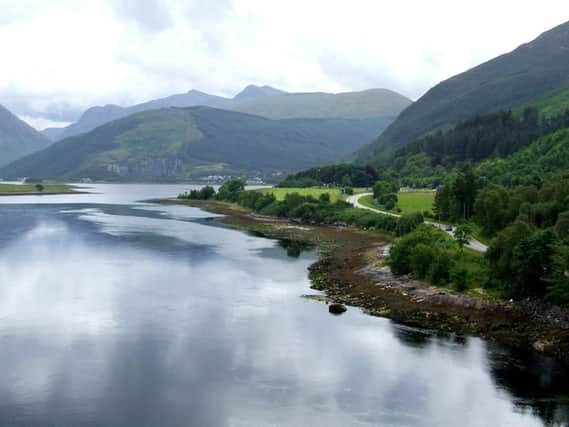Fresh light cast on man hanged for Appin Murder as archaeologists and QC meet


Now, new light is being shed on the life of Stewart who was executed as an accomplice to the murder of government agent Colin Campbell of Glenure, who was shot in the back with two musket balls as he walked through the Wood of Lettermore near Ballachulish in 1752.
Known as the Appin Murder, much doubt has been shed on the conviction of Stewart, a Jacobite, who was rounded up in 1752 as army and government officials crawled the Highlands following Culloden in an attempt to exert control.
Advertisement
Hide AdAdvertisement
Hide AdArchaeologists are working with Lord Angus Stewart QC and local historian Neill Malcolm to build a picture of the man whose body hung rotting by Loch Leven for several years in a threatening show of dominance, his bones picked up from the ground by a friend one by one.Elaine Black, survey director and member of the Association of Certificated Field Archaeologists, said: “Much ink has been spilt on the Appin Murder. It is interesting that even now we can still learn more about James Stewart and his remarkable life”.
A longhouse dating to the time Stewart was herding cattle in Glen Duror, near Ballachulish is now being investigated with
new research of state papers throwing up new possibilities about the man much lamented following his death.
A document from 1746 has suggested Stewart may have been on the same prison ship to England as Flora MacDonald, who aided Charles Edward Stuart’s escape from Scotland following his defeat at Culloden.
Another record suggests the same man was one of six Jacobite prisoners held at New Gaol, Southwark, who requested to have their leg irons removed. The gaoler demanded a price of six Guineas, an enormous sum at the time.
Known as James of the Glen, Stewart went to his death protesting his innocence with the Appin Murder immortalised in Robert Louis Stevenson’s novel Kidnapped.
Several theories surround who killed Colin Campbell, who was responsible for carrying out evictions in Appin on estates forfeited by the government following Culloden.
The prime suspect at the time was Allan Breck Stewart, James Stewart’s foster son and Jacobite courier, but he escaped to France as the hunt for the murderer got underway.
Advertisement
Hide AdAdvertisement
Hide AdAnda Penman, a descendant of James, claimed shortly before her death the murder had been planned by four young Stewart lairds with Donald Stewart the most likely shooter. Her theory sits with a strong tradition locally that Donald Stewart was the guilty man.
Meanwhile in 2016, Professor Allan MacInnes, Emeritus Professor of History at the University of Strathclyde, claimed he had solved the case and that the murder was an “inside job”. He believes Campbell’s nephew Mungo, who walked with his uncle in the woods at the time of his death, fired the shot in order to realise his own ambitions. He inherited his uncle’s post following his death.
The latest research results are available in a new publication, Glen Duror, In Search of James of the Glen.
